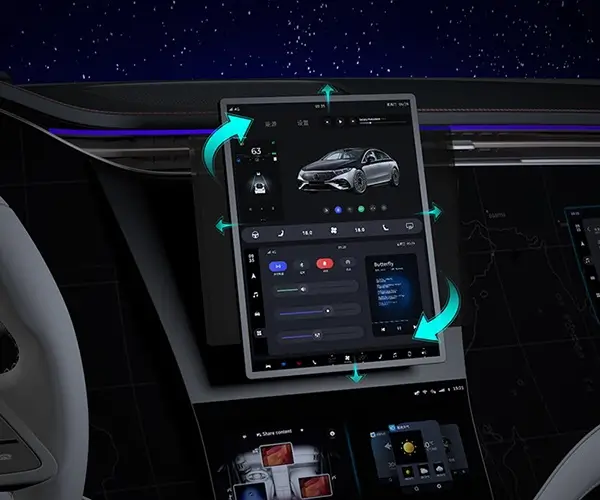Introduction: Why Properly Attaching to Micro Servo Wires Matters
Getting started with micro servos might seem straightforward – you connect power, signal, and ground, and off you go. But dive a little deeper, and you'll realize that ensuring a secure, efficient, and durable connection can make or break your project. Micro servos are tiny yet powerful components, often used in drones, robotics, and remote-controlled vehicles. Their delicate wires and compact design demand precision and care when attaching.

Understanding how to properly connect to a micro servo wire isn't just about making it work once; it's about establishing a reliable link that withstands movement, vibration, and time. A good connection reduces signal drop, prevents unintended disconnections, and ensures your mechanical marvels operate smoothly.
What You Need for a Secure Connection
Before you begin, gather the essentials. Here’s what will help you achieve a perfect attachment:
Micro servo wires: Usually three thin wires—power (often red), ground (black or brown), and signal (white, yellow, or orange). Quality and insulator integrity matter. Connectors or pins: JST connectors are common, but sometimes you’ll find Dupont pins or servo wires that need crimping. Tools: Fine-tipped wire strippers, crimping tools, soldering iron (if necessary), heat shrink tubing, and sometimes female or male headers. Additional materials: Protective heat shrink, electrical tape, or friction fit connectors to enhance durability.
Understanding the Wiring and Pinout
Most micro servos follow a standard wiring convention:
Red: Power (+V), typically 4.8V to 6V Black/Brown: Ground (GND) White/Yellow/Orange: Signal (PWM control)
Knowing this helps prevent mistakes that could damage your servo or your controller.
DIY Connection Methods: Pros and Cons
You can attach to micro servo wires using various approaches; each has its benefits and limitations.
Direct soldering: Permanent, reliable, but less flexible. Crimping connectors: Quick and reusable, perfect for prototyping. Pre-made servo extension cables: Easy and consistent, ideal for complex setups.
Each method depends on your project needs—whether it's a one-off experiment or a polished final product.
Step-by-Step Guide to Attaching to Micro Servo Wires
Now, let’s get into the practical techniques that will help you attach to micro servo wires like a pro.
1. Preparing Your Wires
Begin by inspecting your micro servo wires. Look for frays, breaks, or damaged insulation. Clean wires for a solid connection. Use a fine-tipped wire stripper to remove about 2-3mm of insulation at the end, exposing enough copper to work with but not so much that it risks shorting.
2. Choosing Your Connection Method
Using crimp connectors:
Slide the stripped wire into a crimp terminal designed for small gauge wires.
Use a crimping tool to secure the connection firmly—good for quick setups or if you need to swap connections often.
Insert the crimped pin into a matching connector housing (e.g., a JST connector).
Soldering the wires:
Heat your soldering iron to an appropriate temperature (around 350°C/662°F).
Tin the wire’s end by applying a small amount of solder.
Brush the tip of the servo’s wire connector (or directly onto the wire) to make a good connection.
Feed the solder into the joint while holding the wire steady.
Allow cooling before handling.
Use heat shrink tubing over the joint for insulation and strain relief.
Using adhesive headers or sockets:
If your servo or controller comes with female or male headers, insert the wires carefully into the header socket.
Ensure that the pins are seated firmly and aligned correctly with the color code.
3. Securing and Organizing Wires
Once attached, secure your connections. Use cable ties, velcro straps, or spiral wrap to keep wiring neat. Avoid pulling or flexing the wires excessively to prevent disconnection or damage.
4. Testing Your Connection
Power your servo and run a basic test—try moving it with your controller. Observe for smooth operation, and check for issues like jittering, which could indicate loose wiring. Always verify the motor operates in the correct direction with proper response.
5. Troubleshooting Common Problems
If the servo doesn't respond, recheck connections—especially signal wire. If the servo jitters or moves erratically, ensure power and ground are solid. For intermittent signals, inspect the wiring for loose or broken contact. Remember, micro servo wires are delicate; gentle handling preserves their lifespan.
Additional Tips for Beginners
Practice soldering and crimping on scrap wires first. Use color coding consistently to avoid confusion. If you’re unsure about a connection, test with a multimeter to verify continuity. Keep your workspace organized to prevent wire tangling or accidental shorts.
Summing Up
Attaching to micro servo wires, while seemingly simple, requires a mindful approach to ensure the longevity and performance of your servo-driven projects. Precision, careful handling, and proper tools make all the difference. With practice, you'll develop a steady hand and an eye for detail—transforming your hobby into a craft.
Mastering these techniques unlocks new possibilities, whether you're building a tiny robot, a drone, or customizing miniature vehicles. So go ahead—pick up your wires, tools, and a little patience. Your micro servo will thank you!
Leveraging innovations in modular drive technology, Kpower integrates high-performance motors, precision reducers, and multi-protocol control systems to provide efficient and customized smart drive system solutions.




































